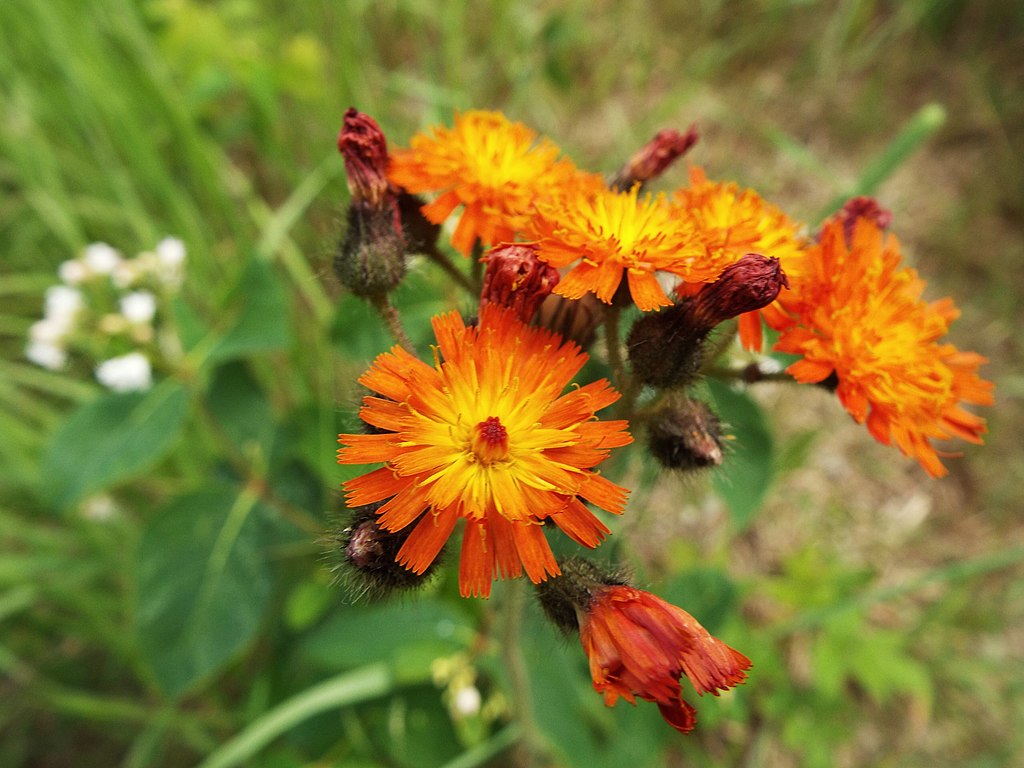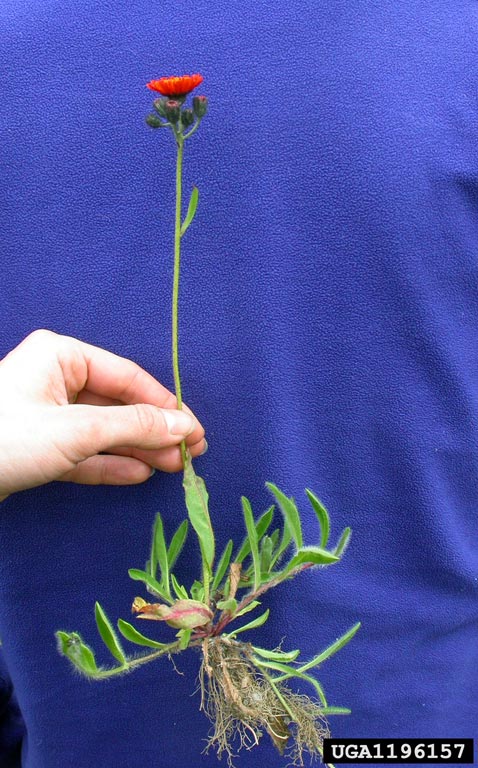Orange Hawkweed
Hieracium aurantiacum
Plant Description
Hawkweeds are perennials in the sunflower family with milky juice, yellow or orange dandelion‐like flower heads, stolons (runners), bristly hair overall. Plants have rosettes of strap or lance‐shaped leaves at the base of the stem. The basal leaves of most non‐native hawkweeds usually persist through flowering.
Plant Details
| Life Forms | |
|---|---|
| Habitats | |
| ODA Listing | |
| Soil and Moisture Conditions | |
| Suggested Actions | |
| Shade Preference | |
| Mature Height | 12"+ |
| Distribution | Orange hawkweed is sometimes found in Residential yards where it escapes from intentional plantings or was introduced as part of a “wildflower meadow mix.” It is illegal to sell orange hawkweed or orange hawkweed seeds in Oregon and Washington. Hawkweeds can be found from sea level to high elevations and are most abundant at middle elevations in the mountains and along roadsides. |
| Control | Dig up plants in the spring or early summer when the soil is still moist and before the seeds mature. The roots are fibrous and relatively easy to dig up but break easily. It is important to remove as much root as possible. Hawkweeds with stolons will re‐sprout from any fragments left in the soil. Cut off and bag all flower heads because they can form viable seeds even after they are cut or dug up. If there are already seeds, cut and bag the seed heads before digging up the rest of the plant. It is very difficult to pull the plants without dispersing the small, lightweight seeds. Brush off boots and clothes before leaving the infested area. Carefully monitor areas where mature plants have been dug up to prevent new infestations. If possible, plant with grass or other competitive vegetation. Infested areas typically have many seedlings and an extensive seed bank. Mowing will not control hawkweeds because they are perennials and most reproduce by stolons as well as seed. Mowed plants respond by sending up shorter stems and quickly flowering again. Plants will also put more energy into spreading by stolons and the infestation size and density will increase. A single plowing may increase hawkweed cover, but on productive agricultural sites, an intensive management program that combines cultivation and annual crops will effectively control hawkweed. In pasture settings, placing a salt block inside infestations can reduce patches by encouraging trampling. |
| Disposal Methods | Bag all flower heads. If the plants are in seed, carefully cut off the seed head and place in a bag without dispersing the seeds. Dispose of flower heads and plants in household garbage or take to a transfer station for disposal. Do not compost or put in yard waste. Never dump yard debris in natural areas. |
| Reproduction and Spread | Hawkweeds are perennials that reproduce by seed. Many also spread out vegetatively through stolons, rhizomes, and axillary buds from root crowns. Also, hawkweeds can produce viable seed without cross-pollination. Motor vehicles are the primary mode of spread in the Pacific Northwest. |
| Introduced | It was introduced in 1875 from Europe to the US in Vermont as a garden ornamental. |
| Look Alikes | other hawkweeds |
| Impact | Many hawkweeds are allelopathic. They put toxins in the soil which prevents the growth of other plants. As a result of prolific seed and stolon production, hawkweeds are successful competitors, crowding out native, ornamental, pasture, and crop species. Hawkweeds reduce forest forage. |
| More Info |
© Marion Soil and Water Conservation District. All Rights Reserved.


